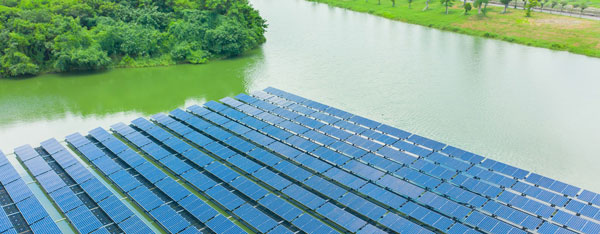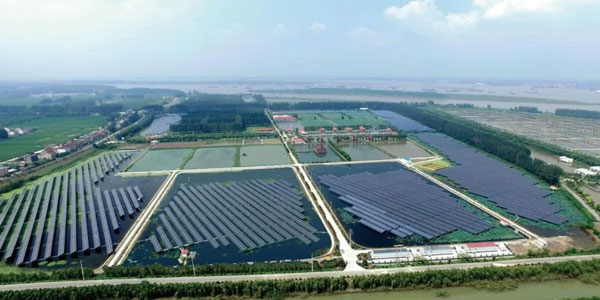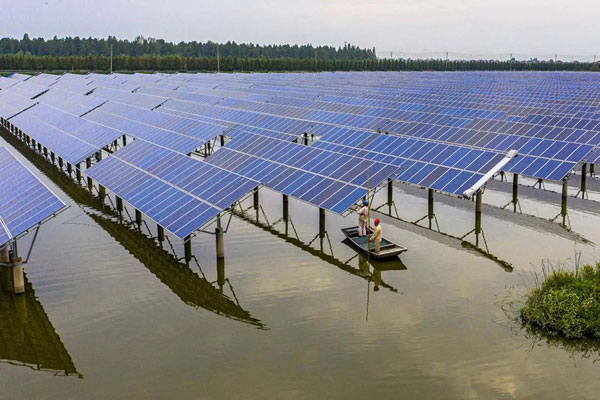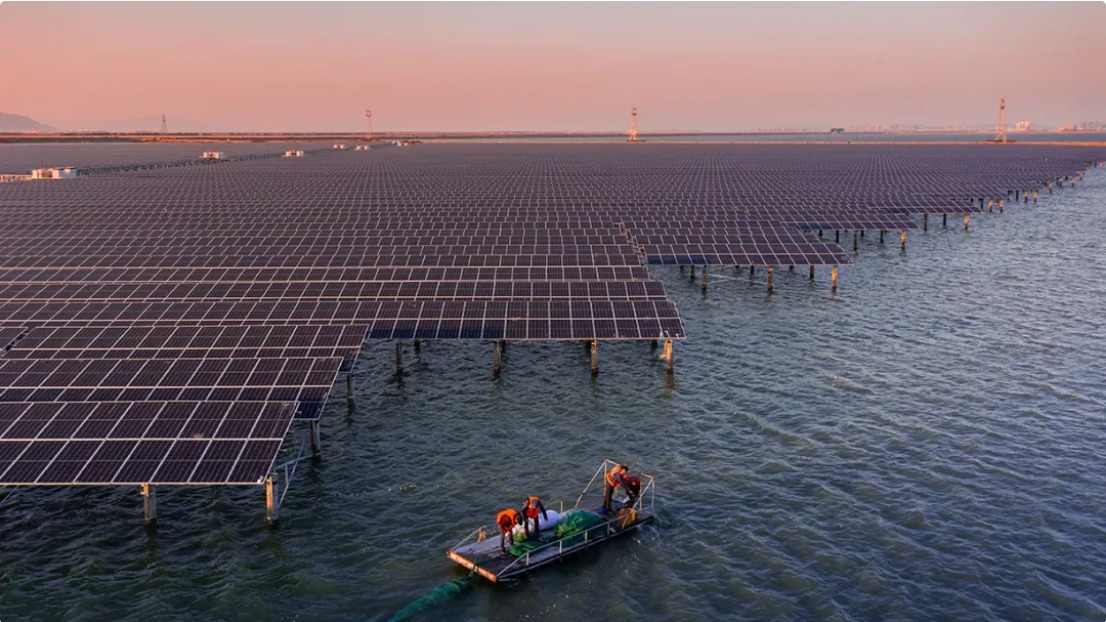Reduction in Greenhouse Gas Emissions
One of the considerable effects of the use of solar energy in aquaculture is the reduction of greenhouse gases emission. A typical fish farm would use diesel generators for aeration and heating of water. Consequently, the emission of carbon dioxide and other greenhouse gases can be quite substantial. The change to solar energy can reduce the negative impact on the environment.
Case Study
A commercial catfish farm in North Carolina installed solar-powered aeration systems after using diesel for aeration of the water over 50 acres of water surface. The diesel engines of this small fish farm used to blow over 10,000 gallons of a diesel product and contributed to the emission of nearly 100 metric tons of C02. Solar aeration systems at the farm cut down C02 emission by approximately 75%. Further, the change had an economic effect as the energy costs were reduced by 40%.
Data-Driven Analysis of the Impact
In the Mekong Delta region, data was collected regarding the carbon emission of small to medium-sized fish farms which used diesel heaters of fish ponds for water heating. A total of 200 fish farms implemented solar heating systems. Each farm is assumed to cut down emissions of CO2 by at least 5 metric tons per year. Consequently, the change results in the annual reduction of 1,000 metric tons of CO2, with each year equaling the emission of nearly 217 cars.
Another application of solar energy is a solar feed system. Modern computers initially feeders in a pond are powered by solar panels. The use of solar feed systems requires the installation of batteries to feed the machinery in the early morning and late afternoon for better feeding results. Another example is the use of a solar feed system at a farm in California on ten ponds. The use of solar feed reduces the cost of labor by 20% and cuts down the use of energy created in coal or gas-fired power plants in the region.

Decrease in Fossil Fuel Dependency
Implementation of solar energy in aquaculture contributes to a significant decrease in reliance on fossil fuels. The latter are heavily used for a variety of operational activities including the heating of the water, lighting, and running equipment. The prevention of resource depletion, thus, leads to better sustainability within fish farming.
Solar Water Heating Transition
An example of reducing the reliance on fossil fuels can be found in the switch to solar water heating in fish farms. A tilapia farm in Arizona has installed solar panels to heat the water, which consequently replaced the propane gas water heating. The annual consumption of propane amounts to approximately 3,000 gallons, a costly and CO2 emission-generating process. With the solar system integrated in the operation, the farm now works almost entirely on solar battery during the sunny months. The propane consumption has decreased by around 80% since the installment of the new heating system.
Solar Lighting Systems
Another successful case of reducing fossil fuel use in a similar setting can be described by the inception of solar and LED lighting systems in fish farms. Operators at a facility based in Florida have transitioned between dusk and dawn use of the lighting to solar power. There is an approximate 1,200 kilowatts of electricity saved each month, as the lights were formerly powered by coal from the utility companies’ power plants. Such measures greatly reduce the operational CO2 emission and the consumption of grid electricity for the facility.
Solar-Powered Equipment
In addition to heating and lighting, solar power is also used to run the essential devices at the fish farms, such as feeders and aerators. At a salmon farm in Maine, the transition to solar batteries for feeding occurred with the complete conversion of all farming equipment to similar power source devices. With all feeders working on sunlight energy, the farm’s total consumption was reduced by 60% while keeping its carbon footprint to a minimum.
Improvement in Water Quality
The using if solar energy leads to a significant improvement of water quality in aquaculture as it powers the systems that contribute to more regular and clear aquatic environment. These systems involve water pumps and filtration systems that work with more efficiency and less environmental impact in comparison to their fossil fuel-powered alternatives.
Solar-Powered Filtration Systems
As an example of a more direct improvement, one may consider the improvement of water quality due to solar-powered filtration systems. An example of such a system may be found at a facility that breeds brown trout in Colorado. In this system, water is pumped by water pumps that are powered by solar panels and benefits from increased turbidity and lower ammonia, causing improved conditions for the fish. It was reported that the usage of the solar panels resulted in a 30% decrease of turbidity, while the concentration of ammonia reduced by 25%, improving the fish’s conditions and influencing their vulnerability to disease.
Energy-Efficient Aeration
Increasing dissolved oxygen levels in water is also possible due to solar-powered aeration systems. At a facility in Mississippi, where bass is being bred, the solar panel-powered areators have been used on the ponds across 200 acres. These devices were able to improve the dissolved oxygen level from the mean of 5 mg/L to 9 mg/L, benefitting the speed of the fish’s growth and their survival percentage. What is more, the role of algae blooms also decreased as a result of the proper oxygenation of the water.
Automated Water Management Systems
The increased water quality that is related to solar energy may be further improved through automated water management systems. The example of implementation of such a system in Alabama at a catfish pond may showcase the results as the solar-powered automation allowed the facility to increase water use efficiency by 40%. This was due to the fact that conditions of water in the pond, such as pH balance and nitrate level, were regulated by an automated system that used solar energy to adjust them in real time, leading to significant improvement of water quality.
Support for Biodiversity
Solar energy contributes to aquaculture biodiversity by providing a cleaner, more environmentally stable environment for aquatic ecosystems. Solar installations help to reduce pollution and habitat disruption, making the environment a natural balance and protecting a number of species. For instance, in the aquaculture industry conventional sources of power are typically noisy machinery, which is known for affecting local wildlife habitats. In comparison, solar panels operate with no sound, and minimal environmental impact. Prominently, a fish farm in Oregon has integrated solar panel arrays above fish ponds, which act as fish shelters, as well as power sources for the on-farm uses. Moreover, this provided the added benefit of saving energy, simultaneously supporting the habitat of the farm. Specifically, after two years of installation, local bird and aquatic plant populations around the fishponds nearly doubled. Consequently, this increased the available food sources and habitats of the fish.
Thermal Regulation through Solar Energy
One significant use of solar energy is the regulation of water temperature, which is critical given solar power is so useful in maintaining aquaculture areas. It is better here to prevent water temperature fluctuations as they can be particularly dangerous in tropical areas where some shrimp species are sensitive to temperature changes. A shrimp farm in Thailand reported an increase in shrimp health and survival when water was kept steady at 28°C. This was managed through the cooling system, which was powered by solar energy. Not to mention, the cooling system was 15% more effective in maintaining water at the desired temperature than traditional cooling systems.
Solar-Powered LED Lighting for Night-Time Biodiversity
Similarly, they are incredibly useful given their parallel to natural nighttime for the nocturnal behaviors of many species. For example, a hatchery in Florida which used solar-charged LED lights to mimic moonlight found a 25% increase in spawning rates for some nocturnal fish species.

Energy Conservation
Solar energy provides aquaculture with considerable help in terms of energy conservation as it allows the use of nonrenewable energy sources to be lessened. Furthermore, it can be used in a variety of ways to enhance the overall efficiency and reduce the operability of different devices. The use of solar energy not only increases the overall efficiency of the process but also provide firms with lower costs and lower environmental impact.
Use of Solar Energy in Daily Operations
One of the most popular uses of solar energy is the employment of solar panels for daily operations. It provides great advances in the energy use of aquaculture. For instance, the tilapia farm, located in Honduras, uses solar panels to operate the whole water circulation system. The average amount of energy produced by the solar system constitutes 50,000 kWh per year. The average energy saving can amount to 70% of the whole cost and allow the farm to decrease the impact on the environment.
Solar-Powered Backup System
An alternative well-developed way to enhance energy conservation is to create a solar-powered backup system. It is an effective manner of storing energy while using a traditional device to ensure smooth operation during the time of power shortages. One of such examples includes the catfish farm located in Alabama, which uses solar panels for the oxygenation equipment. The alternative system allows the farm to save up to 30% of the energy that would be otherwise wasted by the diesel generator to power the system.
Use of New Generations of Solar Panels
Another good way to ensure energy conservation includes the employment of new generation solar panels. For example, the California farm uses solar panels containing the record-breaking high efficiency photovoltaic cells. The new panels experience a 22% efficiency rate, whereas older models provided energy conservation at a 10%-15% rate. It allows the farm to spend less energy on its operation while providing exceptional energy saving for the firm.
Long-term Sustainability
Solar Energy. It connects field of aquaculture with long-term sustainability by providing this sector with renewable source of energy. Solar power decreases aquacultures’ dependency upon diminishing, and therefore, non-sustainable energy sources. Thus, such source of energy also presents the aquaculture sector a chance to support their environment and the planet as a whole.
Saves Money
Solar energy also provides rather substantial financial gains at the end of the day. Thus, Wisconsin-based perch farm received a solar panel system at the cost of $40,000 \cite{4thfact}.
Panel Systems expected to pay for themselves in approximately 6 years and to start bringing the $9,200 of analytical profit right after that. The system will reduce the electricity bills of the farm for more than one third of its costs – $7,000 on the average per annum. Consequently, solar power also significantly decreases the probability of economic insolvency too.
Sustainable for the Environment
It also helps the field to decrease its carbon footprint. In fact, if to turn our attention upon one of the Norwegian salmon farming projects, we will learn that in the process of transition to the solar power source of this aquaculture became capable of significantly reducing its carbon dioxide emission by as much as 60 percent.
Advantages for the Limited Case and for the Field as a Whole
It is also valuable to notice that reasons explained above also provide a number of other advantages to such fields as aquaculture. Firstly, large properties such as fields that a Mormon family is trying to grow in Cameroon will find it exiting to install solar panel on its territory and dedicate time to fruit drying processes at night. Secondly, such property will not be afraid of ecologically-minded international community that is growing more and more menacing to the food production field as business is quite unsympathetic towards dealing with animals in general.



